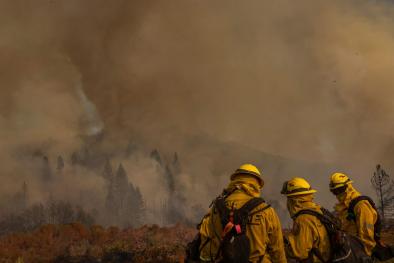Science Source
Multimodel Detection and Attribution of Extreme Temperature Changes
- Conducts optimal fingerprinting analyses using 12 climate models integrated under anthropogenic-only forcing or natural plus anthropogenic forcing
- Compares observed and simulated changes in annual extreme temperature indices of coldest night and day (TNn and TXn) and warmest night and day (TNx and TXx) from 1951 to 2000
- Detects the anthropogenic signal in global and northern continental means of all four indices, albeit less robustly for TXx, which is consistent with previous findings
- Finds the detected anthropogenic signals to be separable from natural forcing influence at the global scale and to a lesser extent at continental and subcontinental scales
- Finds that detection occurs more frequently in TNx and TNn than in other indices, particularly at smaller scales, supporting previous studies based on different methods
Related Content
Headline

Feb 7, 2024 | Climate Nexus Hot News
Heat And Smoke Are Worse Together Than Apart
Science Source
| Science Advances
Unprecedented climate events: Historical changes, aspirational targets, and national commitments
Noah S. Diffenbaugh, Deepti Singh, and Justin S. Mankin
Science Source
| American Meteorological Society
Sixfold Increase in Historical Northern Hemisphere Concurrent Large Heatwaves Driven by Warming and Changing Atmospheric Circulations
Cassandra D. W. Rogers , Kai Kornhuber , Sarah E. Perkins-Kirkpatrick et al
Science Source
| American Meteorological Society
Diverse Characteristics of U.S. Summer Heat Waves
Bradfield Lyon and Anthony G. Barnston


